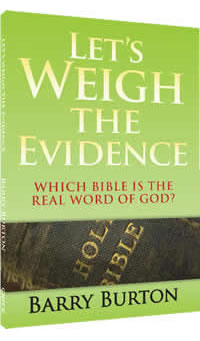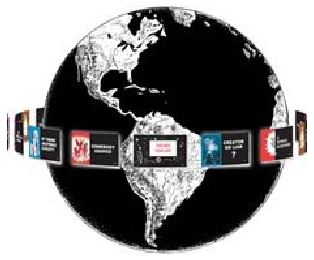Does Your Bible Have 'Fairytale Markers?"
In Wycliffe`s training of linguists to go to an aboriginal tribe and develop a written language, there is the story about "fairytale markers." It seems that a group of linguists had labored for years learning the language, developing an alphabet, constructing a grammar, and finally translating the New Testament into the language. Printing preparations were made to produce thousands of copies for distribution.
Somehow it was discovered that this tribal language had a certain style of talking in which everyone knew that the story was not true, but was instead, a "fairytale."
Unfortunately, this characteristic was not discovered until the entire New Testament was completed, ready for printing. It was written in the style that told the reader that the whole thing was a made-up story.
In English, we have similar "fairytale markers." A very familiar example is to start a story with the phrase: "Once upon a time...." Immediately, the reader is notified that the following story is a fairytale, not necessarily to be taken as gospel truth. The Wycliffe translators mentioned above had to basically rewrite the New Testament so it would be taken seriously by the tribesmen.
Linguists working on the mission field are not the only ones who run this risk. Linguist and author, David W. Daniels has identified a trend in the modern Bible versions that may, at times, suggest to the reader that the story may be doubted.
A classic example is in the story of Lazarus and the rich man in Luke 16. Jesus spoke this as a true story, not a parable, about a real rich man and a real beggar. Bible dis-believers call this a parable so they can wiggle out of believing in a literal hell. But Jesus said it concerned "a certain" rich man and "a certain" beggar named Lazarus. "A certain" coupled with the beggar`s name, indicates that the story is real. However, in 24 modern bibles, including the English Standard Version (ESV) and the Christian Standard Bible (CSB), "a certain" is omitted. But thirteen other modern versions, including The Message and the Good News Bible (GNB), also add a word that Jesus never said, "once." This results in something like: "Once there was a rich man..." making it just like a child`s bedtime story. This seems like a small point, but coupled with Bibles changing "hell" to "hades" and "sheol," it plays right into the hands of those who claim there is no hell.
This is just one of the risks involved in abandoning a word-for-word Bible translation method (literal or functional equivalence) for the more popular thought-for-thought (dynamic equivalence) method used in modern Bible versions.
When a preacher has a preserved, literal translation, he has a solid foundation for his sermon, which he can then interpret to suit the level of understanding of his congregation.
Unfortunately, the only Bible widely available today that provides this solid, preserved and literal text is the King James Version. To one degree or another, all the modern versions have been done "dynamically" where the translators injected their own interpretation into the text. Subtle "fairytale markers" can be the result, as you saw above.
Daniels has expanded this line of thinking about the danger of modern translations in his books, Answers to Your Bible Version Questions, Did the Catholic Church Give Us the Bible?, and Look What`s Missing. Daniels asks, "Who would you rather trust: translators who give you the exact meaning of what God said in the Bible, or those who chose to interpret the meaning through their own belief (or dis-belief) system?"
- See more articles on related topics:
- Bible Versions
- Bible Translation
- Changes in Bible Versions
Other Articles from March/April 2012:
- In the End, the Bible is Always Right
- Tracts Help Missionaries from Jamaica to India
- Do the Pope and Bible Believers Really Have That Much in Common?
- Truth Compromised is Still a Lie
- Freedom to Sin Replacing Freedom of Religion
- Message From Jack Chick March/April 2012
- Chick Mail Bag March/April 2012
More on Bible Versions:
Products of Interest:
-

Look What's Missing!
256 pages
For years, publishers have been removing words, and even whole verses, from modern Bibles. What's missing from your Bible? Take a look! -

If The Foundations Be Destroyed
98 pages
What does the NIV have against Jesus? Is your Bible missing important verses and doctrines? If it is an New International Version there's a lot missing! -

Answers to Your Bible Version Questions
224 pages
David W. Daniels answers difficult questions about the KJV. Learn how to defend the KJV and why you can trust it. -

Let's Weigh the Evidence
96 pages
In simple language, this book provides the basics of the Bible version issue, showing why the King James is the only Bible you can trust. Compare the solid history of the King James Bible with the new Bibles that remove Christ’s Virgin Birth and His Second Coming. Learn about Westcott and Hort’s bait-and-switch, missing verses and words, the Living Bible’s tampering, copyright issues, and more!



